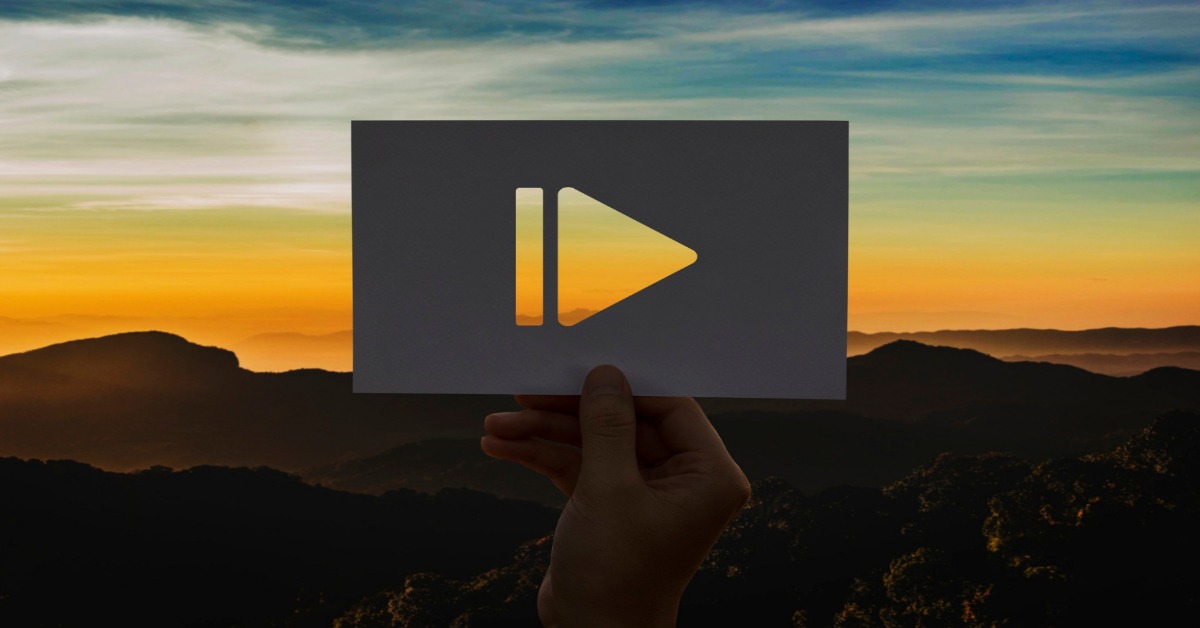7 Types of Corporate Videos That Every Business Should Use
Video content is an ever-growing popular content format being consumed by everyone, all over the world, even corporate videos. Whether shared on social media platforms like YouTube and LinkedIn or embedded on websites and emails, videos can turn complex messages into engaging visual stories.
Talking about videos, corporate videos provide a unique way of presenting your company in front of everyone. They help in showcasing and exhibiting a comprehensive view of a company, from their culture, work environment to their values and vision.
By using corporate videos strategically, companies can elevate their marketing efforts, deliver consistent messaging, and strengthen relationships with both external and internal stakeholders. The impact of a well-crafted corporate video is undeniable. It can drive conversions, increase brand loyalty, and ultimately contribute to the overall growth of your business.
Table of Contents
- Types of Corporate Videos
- What is the Difference between Explainer and Product Demo Videos?
- Why Are Corporate Videos Worth the Investment?
- Conclusion
- Frequently Asked Questions (FAQs) related to Corporate Videos
According to a late 2024 report by Wyzowl, 89% of businesses use video as a marketing tool, and 99% say video has helped to increase user understanding of their product or service. These statistics highlight the growing significance of corporate videos in today’s marketing and communication strategy.
Let’s explore the seven types of corporate videos and their benefits along with examples that show how companies are using them to grow their business.
Types of Corporate Videos
1. Company Profile Videos
A company profile video gives a high-level overview of your business. It introduces your brand’s mission, core values, and workplace culture. This type of video is perfect for introducing your business to potential clients and partners.
You can also use these videos for your homepage, email campaigns, or sales pitches. They help build trust and leave a lasting impression on potential customers and stakeholders.
Example:
Google’s Company Culture Video shows how the company values their employees and helps them become a better person, overall. It’s an excellent example of how to visually communicate your company ethos. It humanizes the brand and gives audiences, whether clients, partners, or future employees a feel for what your company stands for.
2. Product Demo Videos
Product demo videos showcase your product or service in action. They highlight key features, demonstrate benefits, and explain how it solves a problem. It is a great medium for educating your customers about the products and services you offer.
This format is especially useful for B2B companies or startups with technical or complex offerings. These videos help reduce the buyer’s hesitation and drive conversions (sales).
Example:
Slack’s Product Demo Video explains how teams can collaborate better using Slack. It’s straightforward, friendly, and easy to understand. It shows the real use of the software and removes uncertainty, helping prospects make informed decisions.

3. Customer Testimonial Videos
Testimonial videos feature real customers or clients sharing their positive experiences. These are powerful social proof tools and can significantly boost trust and credibility of the company.
Example:
In this testimonial video, Shaadi.com illustrates how they leveraged Zendesk’s support platform to improve response times, enhance customer satisfaction and streamline their operations. By featuring real-team members from Shaadi.com talking about measurable improvements, the video becomes a credible, story-based endorsement that helps prospects envision similar outcomes for their own business.
4. Training Videos
Training videos help onboard new employees, teach new systems, or update staff on compliance protocols. They save time, ensure consistency, and allow employees to learn at their own pace, improving their skills.
These videos are especially valuable in large organizations with frequent hiring or remote teams.
Example:
McDonald’s Crew Training Video offers a peek into how the global brand trains staff efficiently using clear and step-by-step instructions. It ensures all employees receive the same training and reduces the need for repeated in-person sessions.
5. Event Coverage Videos
Event coverage videos capture the energy and highlights of live corporate events, conferences and trade shows. Such videos are ideal for sharing excitement and creating networking opportunities. These can also be used for post-event for marketing, PR, or internal communications.
Example:
Salesforce Dreamforce Highlights covers their annual conference with speaker snippets, and networking clips. It keeps the event alive after it ends and provides shareable content for stakeholders and future promotion. Here is the link of the Dreamforce 2025 Highlights.

6. Explainer Videos
Explainer videos simplify complex concepts or processes using animations, voiceovers, and engaging visuals. They are perfect for educating your potential customers in an easy-to-understand way. They are also shared through websites, social media, and product landing pages for easy accessibility for the customers.
These are mostly used in tech, finance, and healthcare to explain intricate systems or processes.
Example:
Dropbox’s Explainer Video helped launch the brand by explaining how cloud storage works in a simple way. Such videos make complicated topics accessible, helping your customers to navigate and use your products confidently.
7. Recruitment Videos
Recruitment videos showcase your workplace, culture, and what it’s like to work at your company. They help attract top talent by giving candidates a real sense of your environment and values. Such videos are made to build a strong employer brand by showcasing their work environment and employee experience.
According to LinkedIn, companies with strong employer branding see 50% more qualified applicants.
Example:
Mr.Yum, an Australian restaurant ordering platform, produced a recruitment video showcasing their work environment. After raising funds for expansion, the company wanted to hire more people. This kind of video provides potential candidates with a glimpse into the company and their work in the hospitality industry.

What is the Difference between Explainer and Product Demo Videos?
Explainer videos and product demo videos may seem similar at first, but they serve distinct purposes in a business’s marketing strategy.
- Explainer Videos are short and engaging, designed to simplify complex concepts or processes. They focus on educating the audience about a service, idea, or solution, often using animations, storytelling, or voiceovers to make the content easy to understand. Explainer videos are perfect for introducing your business or a new service to potential customers.
- Product Demo Videos showcase a product in action. They are more practical and hands-on, demonstrating how a product works, its features, and its benefits. Product demos help build trust with your audience by showing them exactly how your product solves their problems.
Why Are Corporate Videos Worth the Investment?
The versatility of corporate videos allows them to serve multiple business goals:
- Boost brand visibility
- Increase conversion rates
- Enhance internal communication
- Strengthen client relationships
- Support learning and development
Whether you’re a startup or a Fortune 500 company, investing in high-quality corporate video content is a smart move that can yield long-term results.

Conclusion
Corporate videos are a critical part of a modern business strategy, helping you engage audiences, educate stakeholders, and differentiate your brand in a crowded marketplace. If you haven’t already, it’s time to make corporate videos a core part of your communication toolkit.
Need help creating impactful corporate videos?
Reach out to us as we help brands tell their stories visually; with clarity, creativity, and purpose.
Frequently Asked Questions (FAQs) related to Corporate Videos
Q1- What is corporate film?
A corporate film is a professionally produced video created by a company to communicate its values, mission, products, or services to a targeted audience. These films are typically used for internal communications, client engagement, investor relations, or marketing purposes.
Q2- What is a B2B video?
A B2B (Business-to-Business) video is created by one business to communicate with another business, rather than with individual consumers. These videos often highlight solutions, products, or services that help other businesses improve operations, increase efficiency, or solve specific problems. Examples include explainer videos, case studies, and corporate presentations.
Q3- What is a branding video?
A branding video is designed to build and strengthen a company’s brand identity. It communicates your business values, vision, and personality, often through storytelling, visuals, and emotion-driven content. Unlike product-focused videos, branding videos focus on creating a lasting impression and connecting with the audience on a deeper level.
Read More
7 Advanced Camera Techniques That Make Corporate Videos Visually Unforgettable
Master Shooting with a Green Screen for Corporate Video Production
Mastering Smooth Shots with Gimbals: Elevate Your Video Production
Q4- What is the difference between corporate video and brand video?
- Corporate Video: Focuses on the company as a whole, its operations, achievements, or internal communications. Often used for training, investor relations, or client presentations.
- Brand Video: Focuses on creating an emotional connection with the audience by highlighting the company’s values, culture, and personality.
Q5- What is the difference between corporate and commercial video?
- Corporate Video: Primarily informational or educational, aimed at employees, clients, or partners. Its goal is to build trust, awareness, or internal communication.
- Commercial Video: Designed to promote a product or service directly to consumers, with a clear focus on marketing and sales.
Q6- What are the key elements of a successful business video?
A successful business video usually includes:
- A clear goal or message
- Engaging storytelling or narrative
- High-quality visuals and sound
- Strong call-to-action (CTA)
- Brand consistency (logos, colors, tone)
- Audience-focused content
Q7- How to make corporate videos fun?
Even corporate videos can be engaging and entertaining! Here are some tips:
- Use storytelling to make the content relatable
- Include humor or light-hearted moments where appropriate
- Incorporate animations or motion graphics
- Use real employees or customer testimonials for authenticity
- Keep videos concise and visually dynamic


